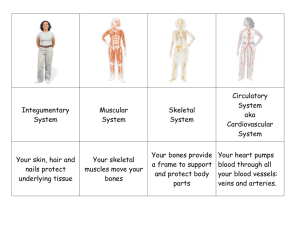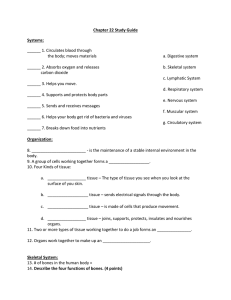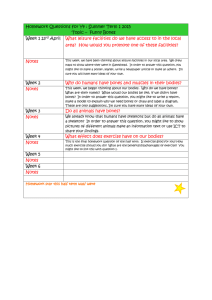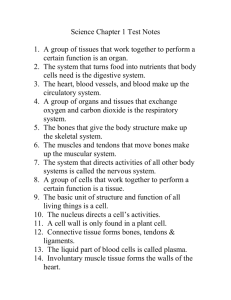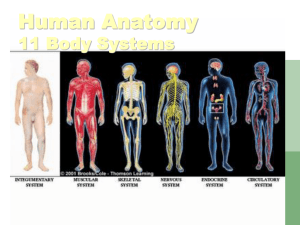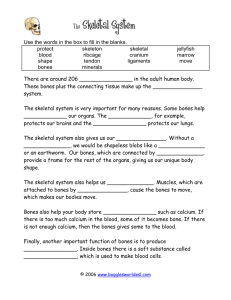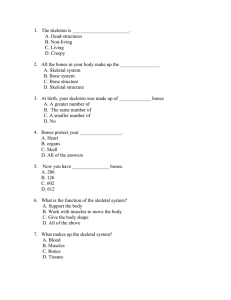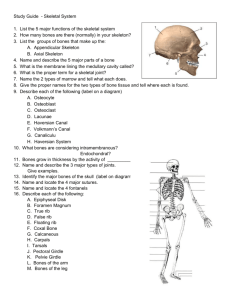The Human Body
advertisement
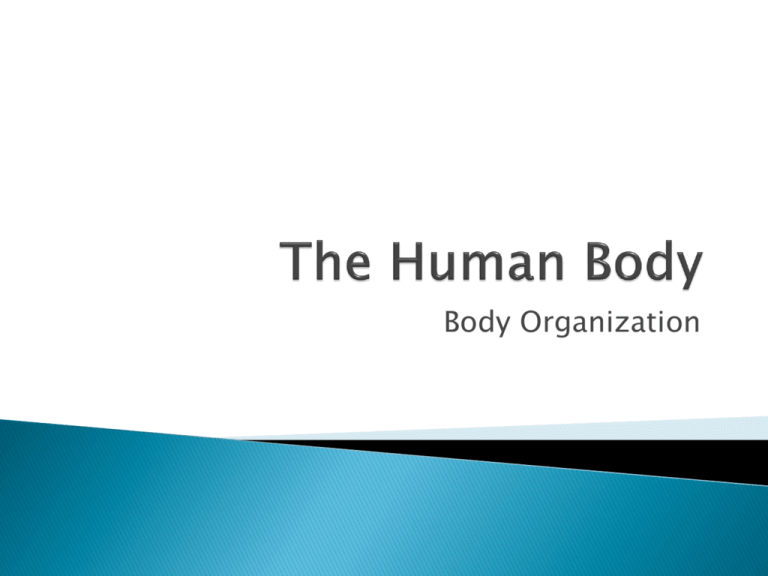
Body Organization What do you do when it is cold outside? When it is hot? ◦ Shiver or sweat Homeostasis is the maintenance of a stable internal environment ◦ Your body systems work together to ensure that your body maintains a stable internal environment Body Organization ◦ Cells ◦ Tissues ◦ Organs ◦ Organ Systems ◦ Organism We are multicellular organisms ◦ We are made up of over 1 trillion cells We have many different types of cells ◦ Examples: Blood cells, muscle cells, bone cells Every cell has a specific job it carries out Epithelial ◦ Covers and protects underlying tissue Nervous ◦ Sends electrical messages throughout the body Muscle ◦ Contracts and relaxes to produce movement Connective ◦ Joins, supports, protects, and cushions bones (joints) Two or more tissues working together ◦ Examples: Heart, lung, kidney, brain The integumentary system includes your skin, hair, nails – these protect underlying tissue Your muscular system works with the bones in the skeletal system to help you move You have over 800 muscles in your body! (of the 800, about 650 just move bones) The skeletal system provides a frame to support and protect your body parts The skeleton contains 206 bones and weighs about 20 lbs (you actually have over 300 bones at birth but some fuse together as you grow) The cardiovascular system pumps blood through all of your blood vessels The nervous system receives and sends electrical messages throughout the brain and body The lymphatic system returns leaked fluid to blood vessels and helps get rid of germs that can harm you The digestive system breaks down food into nutrients that can be absorbed by the body The endocrine system contains glands that regulate body functions by sending out chemical signals (aka hormones) The respiratory system allows the body to absorb oxygen and release carbon dioxide The urinary system effectively removes wastes from the blood and regulates fluids Male ◦ The male reproductive system produces and delivers sperm Female ◦ The female reproductive system produces eggs and can hold unborn babies You will be creating a Human Body Booklet In order to find the information to fill this booklet you will be using textbooks and the literacy library books along with activities associated with each system You and your desk partner will be working together on the same system at the same time You will have 5 days to complete your booklets (you will need to average 2 systems per class period) This will count as a grade and your study guide for your human body quiz
